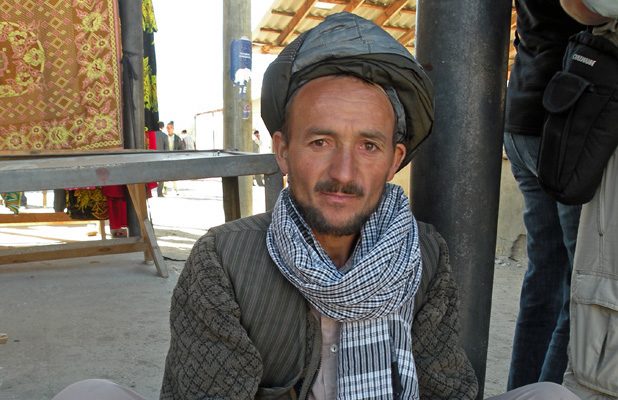Jake Smith joined MIR’s Seattle staff after several years of living and working in Tajikistan, as well as traveling to the far corners of Central Asia. The Pamir Mountains were Jake’s backyard playground for hiking, exploring, and enjoying this “high-altitude heaven.”
The Pamir Highway is a road well traveled by MIR’s Jake Smith, who once called Tajikistan home
Photo credit: Jake Smith
I love the Pamir Mountains and the region they lie in, Badakhshan. With mountains soaring beyond 24,000 feet, the area is nicknamed “the roof of the world.” What’s most exciting about traveling in this area? Its uniqueness. Although Badakhshan is located in Tajikistan, it feels like a separate country.
Natural Beauty of the Pamirs
The sheer beauty of the region’s geography is perhaps the biggest draw. Mountains rise well over 20,000 feet, capped by snow and glaciers year-round. The Panj River cuts steep gorges into these mountains; the fast-moving waters often are just a few yards from the edge of the road. As you move up the Panj River toward its source high in the Pamir Mountains, the gorges smooth out into broad alluvial plains with patchwork wheat fields and poplar groves.
Bactrian camels wander across the river between Tajikistan and Afghanistan
Photo credit: Jake Smith
Afghanistan, in Plain Sight
At all points along the Panj River you can look across to Afghanistan. In some parts along the opposite bank, you can watch Afghan villagers going about their daily lives. At other times, you may see trade caravans carrying dairy products from the high pastures down to the lowland towns. Their shaggy Bactrian camels often stray across the river border to graze on the Tajik side.

Beyond Borders
Travel a bit beyond the Panj River to the highest reaches of the Pamir River valley, demarcated by the Russians and British in the 19th century and now known as the Wakhan Corridor. Here you can actually see towering Pakistani peaks like Tirich Mir, letting you take in three of the ’Stans in one gaze: Tajikistan, Afghanistan, and Pakistan.
In the foreground is Tajikistan, then Afghanistan, and finally Pakistan’s snow-capped mountain crests
Photo credit: Jake Smith
Differences, From Within
These are a few things that strike me as so different between the Pamirs and the rest of Tajikistan. They stem, in part, from the area’s historical (and current) isolation from the rest of Tajikistan:
• Religion: Most Pamiris follow Shi’a Islam, while Sunni Islam is more prevalent in the lowlands.
• Food: A staple of the Pamiri diet is shirchoy, a mixture of tea, milk, butter, and salt or sugar. That’s in sharp contrast to the rice, meat, and bread dishes prevalent in the rest of Tajikistan.
(click on photo for larger photo and caption)
• Language: In many Pamiri valleys the inhabitants speak very little – if any – of Tajikistan’s two main languages: Tajiki and Russian. Instead you’ll hear a complicated mixture of under-studied and obscure dialects like Wakhi, Shughni, Rushani, and more. Often villagers in one valley can’t understand the language spoken by their neighbors just a few miles up or down stream.
This man in Murghab, Tajikistan wears a Kyrgyz “akkalpak,” or white hat
Photo credit: Jake Smith
• Clothing: Pamiri men wear red, green, or tan hats with colorful fringing on the bottom instead of the traditional Tajik black-and-white square skullcaps.
• Citizenship: Yes, technically Pamiris are citizens of Tajikistan, but they consider themselves first and foremost to be Pamiri.
Schoolchildren in Murghab, Tajikistan sport traditional scarves and baseball caps
Photo credit: Jake Smith
• Appearance: High-altitude Pamiris are often fairer-skinned than their lowland Tajik counterparts, and commonly claim ancestry dating back to Alexander the Great’s occupation of the region.
Shifting of seasons near Shughnon, Tajikistan on the Ghunt River
Photo credit: Jake Smith
Final Thoughts
When I think back on all my years living and traveling in Tajikistan, I’ll almost inevitably end up with an image of these spectacular mountains in my mind. The sense of adventure, remoteness, and sheer beauty that I associate with them arrests my thoughts and causes me to dwell nostalgically. I think the desire to return will always be there.
To me, and I think to most travelers who have made the journey, the Pamirs truly stand out as an exceptional destination. The mountains, the history, and the people are simply unbeatable.
Jake Smith, perched high on a hill in his former home of Tajikistan
Photo credit: Jake Smith
(Top photo: Pamir Mountains near Ishkashim, Tajikistan. Photo credit: Jake Smith)








